Setting First Tracks: How The von Trapps Created A Nordic Legacy
Just over fifty years ago Johannes von Trapp launched the first cross country ski center in America. Now, the next generation of von Trapps is taking it to a new level.
The night is so cold that trees crack and pop like gunshots in the forest. The snow squeaks as my skis glide rhythmically, forward and back, along the groomed tracks. To the east, a giant orb of a moon rises over the Worcester Range, illuminating Stowe and the valley below. In the meadows, split rail fences cast shadowy lines across the white fields.
I have covered five kilometers of the Trapp Family Lodge’s 65-kilometer trail network, blood pumping as I herringbone my way up the last climb. It is nearly 6 p.m. when I near the highest point of the trail system and the Slayton Pasture Cabin.
It is a simple log cabin, where one might normally stop for a bowl of hot soup and to warm up by the open fireplace. But it closed at 3:30 p.m. It is dark now and I know I should be off the trails.
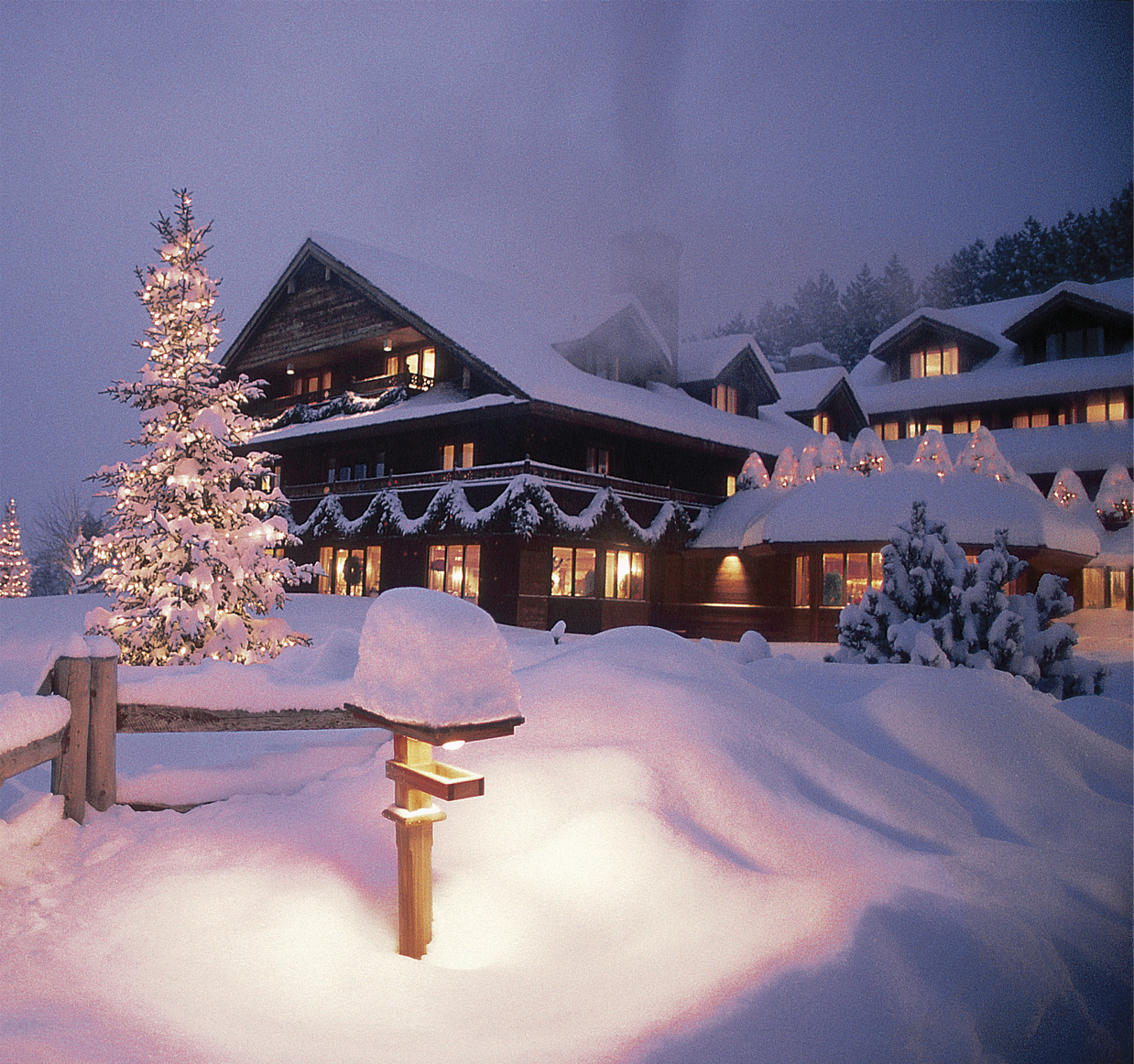
I start the descent, adrenaline rushing on the downhill, flakes flying in the air as I brush past hemlocks loaded low with snow. I pause for a moment at the tiny stone chapel that Werner von Trapp, a member of the 10th Mountain Division who was stationed at the famous Riva Ridge battle in Italy, built. Then it is on through the forest, tunneling through branches bowed down with snow, to the clearing above the Lodge.
Ahead, the chalet-style Trapp Family Lodge glitters with white lights. Garlands and tiny Christmas trees deck the balconies. Inside, singing will have started around the piano, the songs everyone knows.
I get the strange sensation I am living in a postcard. The only thing that would make the moment more perfect was if there were a cold lager waiting. And at the von Trapp Bierhall down the road, there is.
Fifty years ago much of this wasn’t here. Not the chalet-style lodge, not the groomed ski trails, not the bustling Bierhall with its dirndl-clad waitresses and von Trapp’s Austrian lagers—just the family, the hills and the sound of music.
Baron Georg von Trapp fled from Austria to the U.S. in 1938 and bought the Gale Farm in Stowe in 1942. When the Baron passed in 1947, his wife Maria was left to take care of the farm, von Trapp’s seven children from his first marriage and their three: Rosemarie, Johannes and Eleonore.
Though The Sound of Music told of (and fictionalized) the family’s life in Austria, the story of what happened after they came to Vermont and how they launched the first cross country ski center in America is just as good.
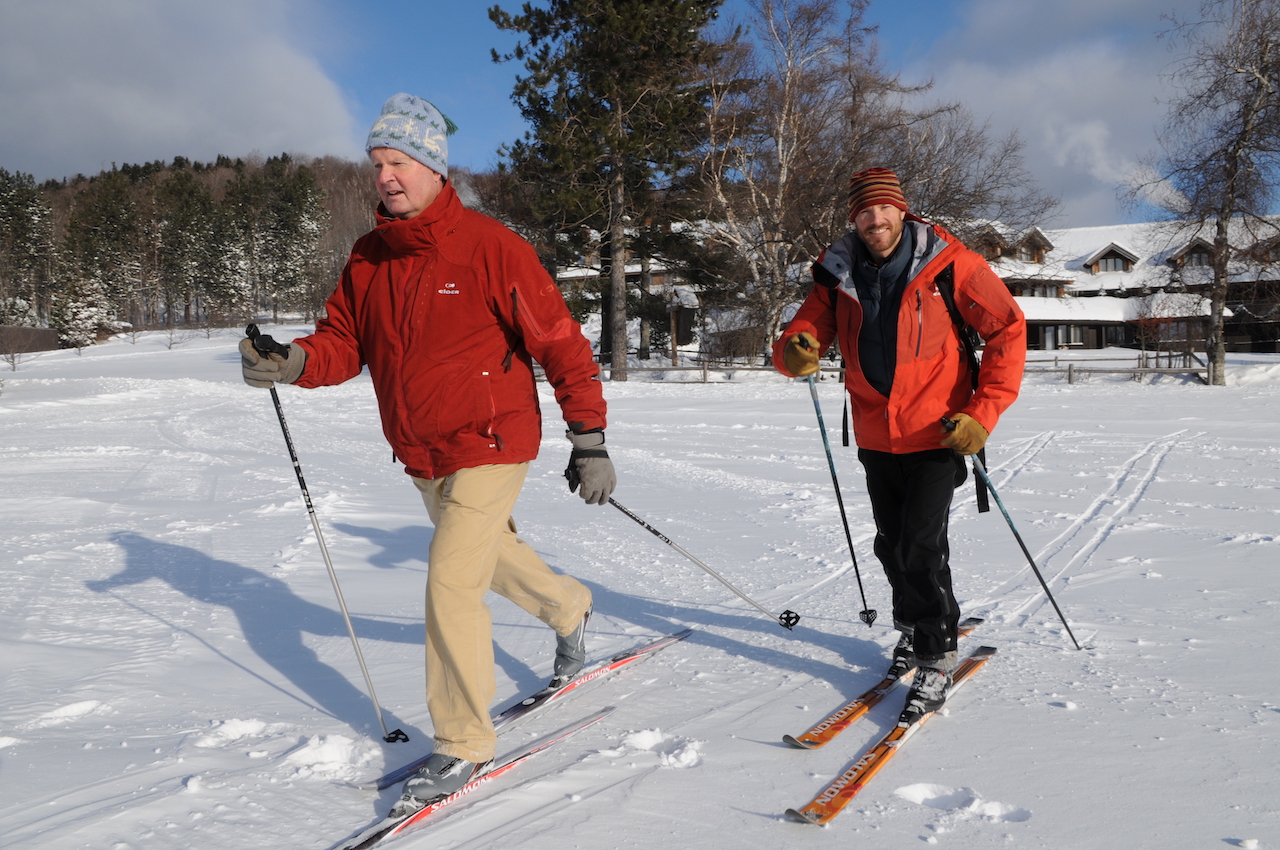
Sitting recently with Johannes, 79, his wife Lynne, 71, and their two children, Sam, 45, and Kristina, 47, the stories start to trickle out. The four all chime in, each impossibly good-looking, all with the piercing blue eyes that earned Sam a role as a Ralph Lauren model.
When he grew up, Johannes recalls, skiing was as much about transportation as it was sport. “It was a much faster way to get out into the backcountry, out to timber or to the old hill farms than snowshoeing,” he says.
“One year, long after the von Trapp singers disbanded, the governor asked the family to sing at an event,” Lynne von Trapp recalls. “We did so, but on the condition that they pave the rutted dirt road up to the lodge” Johannes notes. He continues: “There wasn’t ‘Nordic’ gear then, just the leather boots and wooden skis and rottefella “rat trap” bindings which you could loosen so as to lift up the heel.” Johannes learned to ski primarily in the woods behind the house. Occasionally, the children would get tickets for a single lift ride to the top of Mt. Mansfield. “I remember skiing down Toll Road when I was age 6,” Johannes says. “I think I fell six times.”
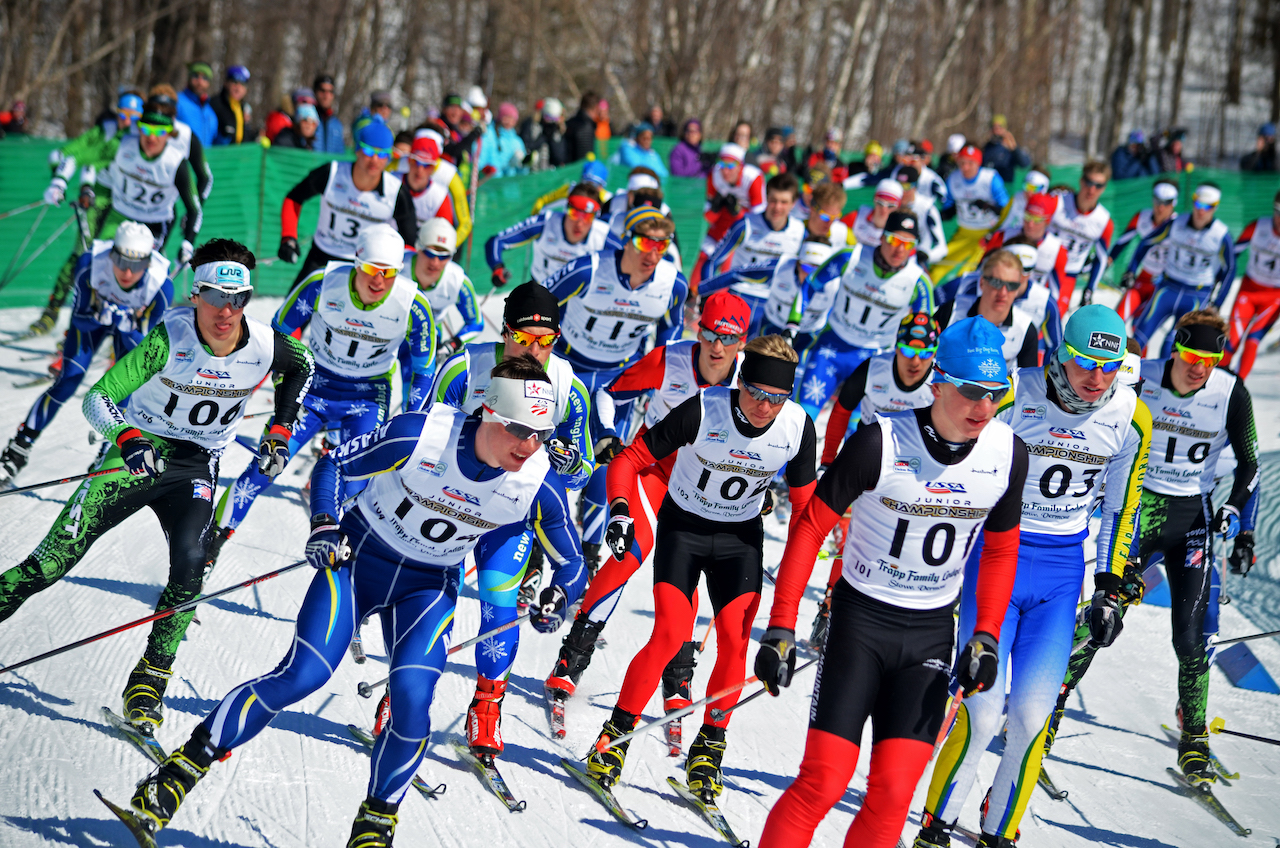
After serving for three years as a missionary on an island off Papua New Guinea, Johannes was accepted at Dartmouth and then went on to the Yale School of Forestry. At Dartmouth, Johannes roomed with a Norwegian, Richard Fuglesang, whom he remains friends with to this day. “He’d come home with me for vacations and we’d ski up the ridge. Skiing then for us was like what backcountry skiing is today and what it was to old Craig Burt and the others who skied Stowe before there were lifts: we skied up to find nice lines to ski down.”
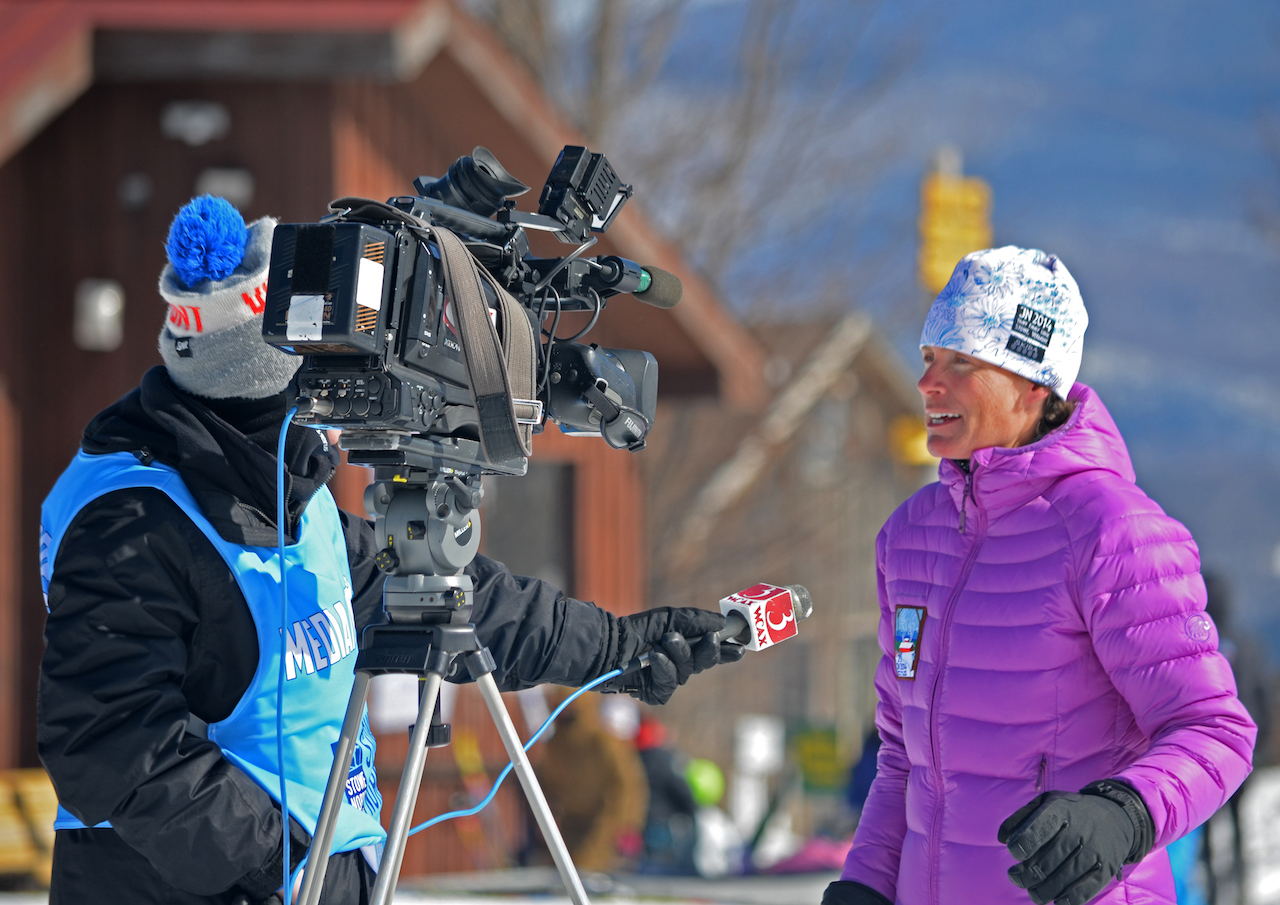
The 1960s were what Johannes calls the “motel era” in Stowe, and with new competition, the Lodge needed to attract new clientele. Johannes had returned to run the place and was looking for a way to increase interest. “In 1967, we bought some skis and put them in the barn and told guests to help themselves,” Johannes recalls. “Yes, and at first it was a massive failure,” he admits with a smile.
That didn’t deter Johannes. “I realized what we needed was a good instructor so with Richard’s help we placed an ad in the Oslo paper. “I remember it said something as simple as ‘Nordic ski instructor wanted to come to America,’” Kristina adds, with a laugh and a shrug. “It was pretty vague.” Still, they got over 300 responses. “I went over to Oslo and the first candidate I met was Per Sørlie, a charismatic Norwegian. I hired him on the spot,” says Johannes.
Sørlie had that magic that all good ski instructors possess. Just as important, he had a brother who was in the wholesale ski business. The first four winters were heavy snow years. Within year one, the Trapp Family Lodge was doing close to $8,000 in ski rentals and lessons, and that doubled the following year. Sugarbush also opened a cross country ski center the following year at what is now Ole’s Cross Country Center, and the Mountain Top Inn, near Killington, began publicizing skiing on its Nordic trails as well. Today, there are more than 350 cross-country centers around the U.S. and more than 30 in Vermont.
“Skiing was booming at the time,” Johannes remembers. “It was what everyone wanted to do. One day I proudly told Kerr Sparks, then head of Stowe’s Mt. Mansfield ski school, that we had 26 lessons. He responded, ‘oh that’s nice, we had 1,500.’”
John Caldwell, who grew up in Putney, Vt. and skied in the Olympics in 1952, remembers what the sport was like back then: “Cross country skiing was a high-school sport; you did it for athletics on a track behind the school. It was, along with ski jumping, slalom and downhill, one of the four things you had to do to be a wintermeister. But it wasn’t something you did after you got out of high school. The idea of a recreational cross-country center was brand new back then.”
Caldwell went on to write the seminal book The Cross Country Ski Book and his children (Jennifer, Tim and Sverre) and grandchildren (Zach and Sophie, especially) have been some of the top racers in the sport, often training or competing at Trapp’s. “They’ve done a good thing with the trails up there,” Caldwell said recently. “And the best part is there’s really good beer after.” That seems to be a theme.
Gradually, the von Trapps began to add acreage to their farm and forest land, which grew from 660 acres to what is now 2,600 acres. “In the early years of Stowe, if you owned 100 acres in town you were given 100 acres in the mountains, too,” Johannes says. “It was a way of developing the hills.” He gradually was able to purchase the hardscrabble hill farms and many of the current trails — Ayers, Parizo, Slayton and Russell —are named for the farmers who once lived in tar-roofed shacks on the land. Other land holdings were added via easements. Today, more than 1,100 acres of the Trapp Family Forest is protected, via a conservation easement donated to the Stowe Land Trust.
The trail network grew too. At first, Sørlie would head out each morning to lay tracks for other skiers to follow. “We eventually bought a snow machine for about $100,” Johannes says. “We’d use it to tow our ‘groomers,’ essentially these big boxes, mounted on two skis and weighted down.” Today, a Pisten Bully grooms the wide trails for both classic and skate skiing, “the most expensive piece of machinery on the property outside the brewery,” Sam calls it.
After Per Sørlie returned to Norway, a string of characters took on his role at the Outdoor Center. They included people with as varied backgrounds as Larry Damon, a four-time Olympic cross country skier and biathlete; retail manager Dennis Reina, who went on to become an author and management guru behind the Reina Trust Institute; and a man Johannes referred to only as the ‘Russian Rental Czar.’ “He was this hulk of a man who lived here in a teepee all winter with a couple of girls to keep him warm. We lived in constant fear my mother would discover this,” he says with a chuckle.
In the 1970s, Johannes persuaded Barre, Vt. native, climber and one of the early National Geographic explorers, Ned Gillette, to come back to Stowe and run the Outdoor Center. “We were at the annual ski show in Las Vegas at the time and Gillette turned to me and said, ‘My test of whether I can work with someone is if I can drink with them.’” He was hired.
Before long, Gillette and a posse of top climbers from California installed themselves at the Outdoor Center. “They’d freeclimb the fireplace in the Outdoor Center,” says Johannes. Gillette later led the first expedition to row from South America to Antarctica.
Gillette also helped teach young Sam and Kristina to ski. “Growing up, cross country skiing was how we got up to the lodge,” Kristina says. Both Sam and Kristina are now full PSIA-certified alpine instructors.
“Kristina is really an incredible, all-around skier,” Sam says, proud of his older sister. They both lived for a while in Aspen, Colo., and did the grueling 40-mile Grand Traverse ski mountaineering race, which climbs more than 8,000 feet over two mountain passes. Sam and a teammate finished second one year.
In Aspen, Kristina met her husband, Walter Frame, who was involved in real estate development there before moving to a similar role at Stowe’s Spruce Peak Realty. Frame later joined the family business where he and Sam share management duties.
Sam returned to help run the Lodge in 2007 and one of the first things he did was bring snowmaking and mountain biking to the property. Walt Frame has been working to develop the real estate and brewery. Johannes had the vision to open the bierhall in 2015 and start the award-winning brewery, von Trapp, which now produces 14,000 barrels of beer annually and ships to nine states.
Outdoor Center manager Charlie Yerrick helped build up the Trapp’s reputation for hosting mountaineering races, such as the Bolton to Trapp Backcountry Ski Race on the Catamount Trail, and hosted NCAA races and the Junior National Championships, in 2014.
Later, Drew Gelinas, a former national ski coach and instructor at the Army Mountain Warfare School in Jericho, established distance running and endurance events such as the Trapp Mountain Marathon. Current Outdoor Center director Blake Olson is continuing the vision of making the trails a year-round playground for athletes of all types.
Johannes shakes his head in wonder at all of this, and smiles. “I always thought that cross country skiing should not be about competition but about getting out in nature and enjoying the woods,” he says. “I envisioned backcountry skiing the way people are doing it now, simply going out and exploring the terrain.”
Today, there is a new generation of von Trapps skiing up the old logging roads. Kristina and Walt’s two daughters, Annie and Stella, ski to school, occasionally, from their house. Sam married Becky Fu, a lawyer from China who helps with special projects. Their first son, Wolfgang, was out skiing with Sam before he was two years old. The second, Johannes “Hansi” von Trapp was born in November.

“We learned so much about balance by cross-country skiing when we were really young that when we started to downhill we were already strong skiers. It’s something that I wish all kids could learn even before they alpine ski,” says Kristina.
Now, in the three households (they all live within a half mile of each other) there are new traditions and old. On Christmas Eve, the family gathers at the Lodge, as they have done every year since Maria was alive, to sing. And on Christmas day, they have what Kristina calls “a progressive dinner,” which might include meat from the Scottish Highland cattle that graze in their meadows, venison from the family hunters (Sam or Johannes), sap from the sugarhouse, or vegetables from the gardens—and, of course, von Trapp beer.
But what makes this dinner special are the times when the snow covers the trails and the family skis from house to house.
The farm, the family, these hills and trails are still very much alive.
Top photo: “Not too fast, not too steep, not too long,” is how Maria von Trapp, pictured, liked her ski outings, according to her daughter-in-law, Lynne von Trapp. Today, Maria’s children and grandchildren still make sure the trail system caters to all levels. Photo courtesy Trapp Family Lodge

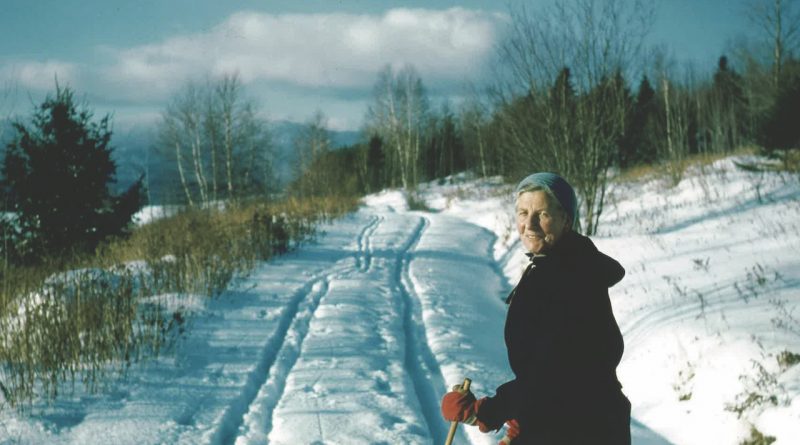
Beautiful article! Thanks so much!
Pingback: 5 Upcoming Events You Won't Want To Miss — VT SKI + RIDE Magazine